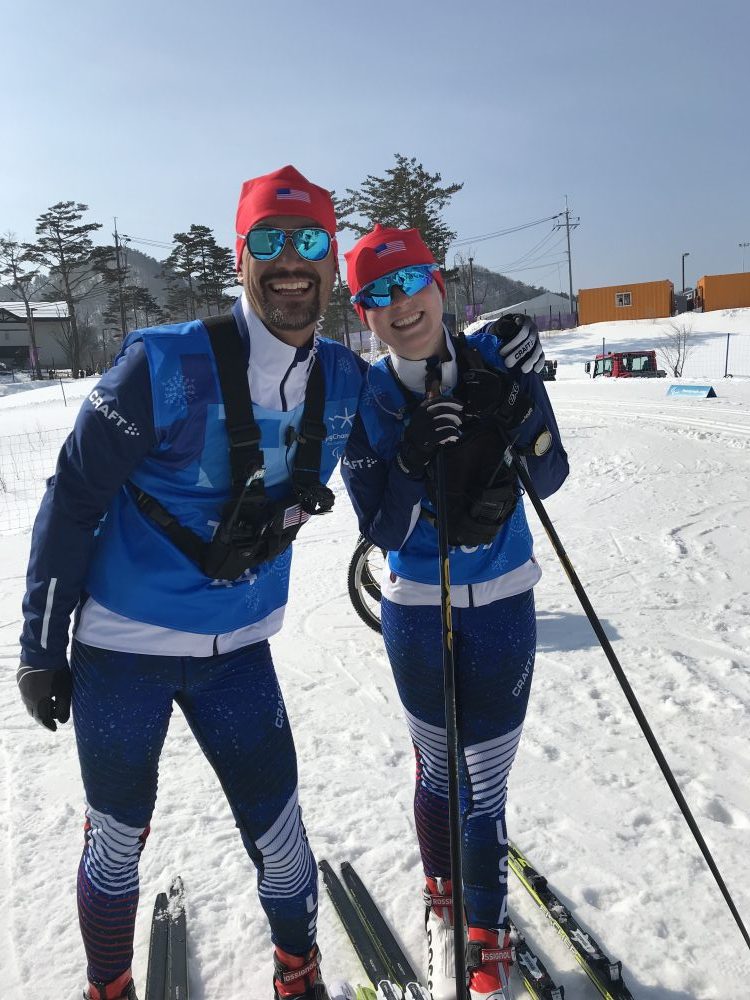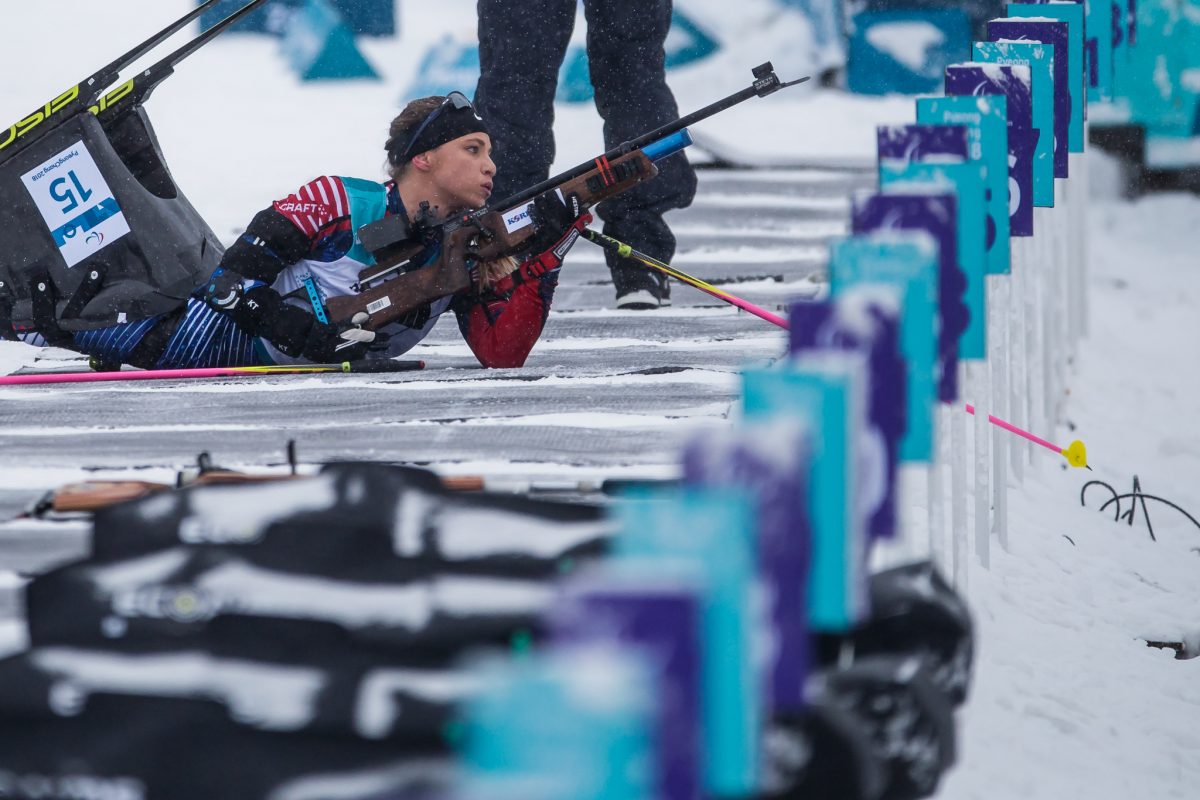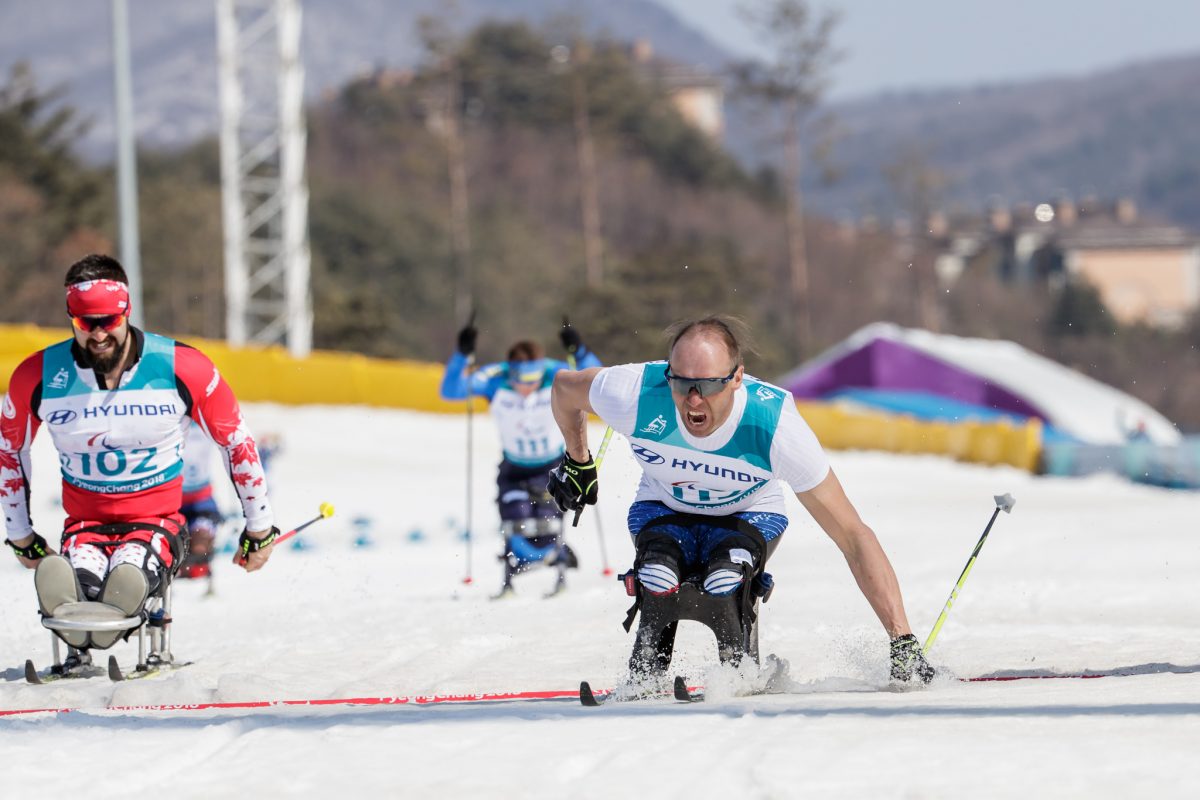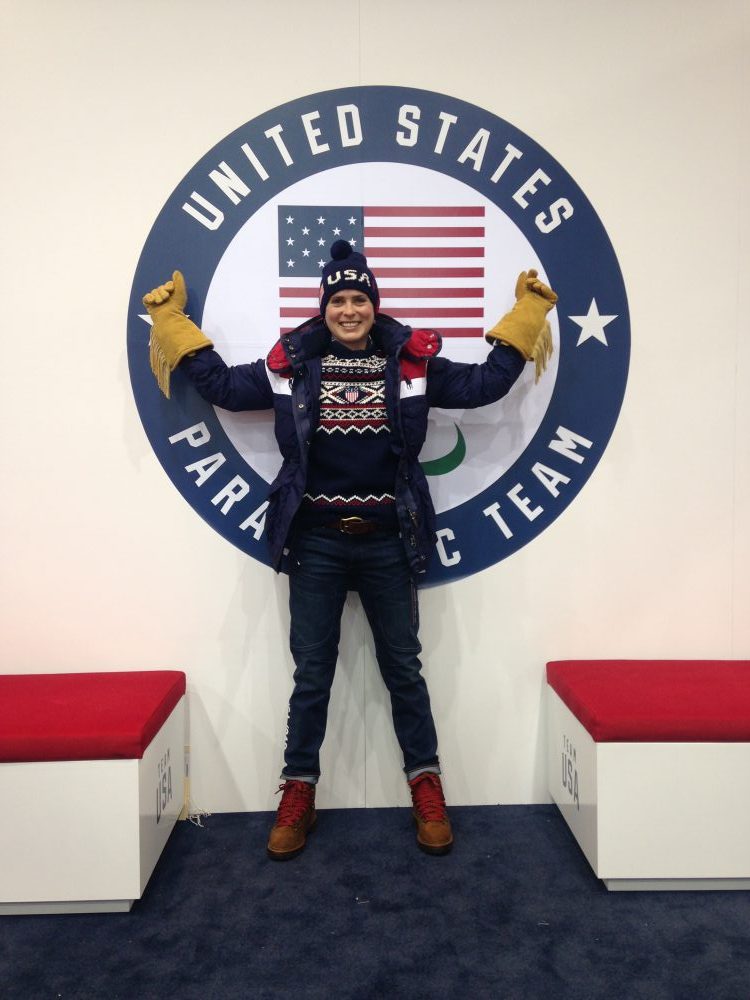This story comes to FasterSkier from Paige Elliott, a lifetime cross-country skier with some wisdom to share after her experience at the 2018 Paralympics. Elliott is based in Durango, Colo. The story is reprinted with permission from the Durango Telegraph and originally ran on April 12, 2018.
***

“What are you doing in March?” and “How would you like to go to South Korea?” were not the questions I was expecting to hear after answering a phone call from my friend Gary last December. Gary Colliander, a fellow Durango resident, and I coached together for the Durango Nordic Ski Club. Two years ago, he was recruited by the U.S. Paralympic Nordic & Biathlon team to become head biathlon coach. The Paralympic team was putting together the support staff for the 2018 Winter Games in PyeongChang. Would I like to go? A few weeks later, my contract was signed, my plane tickets booked.
While I grew up ski racing and have been coaching for my hometown club for five years, a month ago, I had zero experience with adaptive sports. In preparation for my trip across the globe, I hopped online and did some quick research. I came across an article, “Debunking 10 Common Myths About the Paralympics.” Some of these so-called misconceptions were laughable. How could anybody actually think: “If you don’t know how to refer to an athlete with a disability, you should just not talk to them at all?” Others, however, surprised me.
For instance, while the Paralympics hosts athletes with a range of physical disabilities, the term “Paralympics” has no relation to the term “paraplegia.” It actually comes from the Greek preposition “para,” meaning alongside or beside. The name is meant to indicate that the Paralympics happen parallel to the Olympics.
Since the 1988 Summer Games in Seoul, the Paralympic Games occur almost immediately following the Olympics. They are hosted by the same country, the athletes stay in the same village, and competitive events are held at all the same venues. Yet historically, coverage of the event has been minimal, and while most Americans understand that the Paralympics and Special Olympics aren’t one and the same, they can’t really articulate the difference. (The Paralympics are for athletes with physical and visual disabilities and require rigorous qualification criteria; the Special Olympics are an inclusive event for athletes with intellectual and cognitive disabilities).

One month ago, I admit, I was among those who didn’t know the difference. But after my experience in PyeongChang, it was clear that the Paralympics and the athletes who compete in them are anything but an after-thought.
Arriving in South Korea, I was both enthralled and intimidated, surrounded by a mixture of familiar and foreign concepts. Things I was prepared for: skinny skis; tight spandex; the race venue layout and ski waxing. Things that blew my mind: the sheer scale of everything; a cacophony of foreign languages; and the intricate classification system that characterizes para-sports.
The classification system is meant to ensure that competition is fair and equal. Para-Nordic skiers are divided into three main categories: sit-skiers, who use a chair attached to two skis; standing skiers or “standies,” who have lower limb or arm deficiencies; and visually impaired racers, who utilize guides to provide auditory queues. Furthermore, each athlete is assigned a classification that corresponds to a certain percentage. At the end of the race, the athlete’s time is multiplied by his or her percentage. For example, a sit-skier with an upper spine injury receives a lower percentage than one who has full use of his or her core.
If you don’t follow, don’t worry. Just understand that these athletes are strong, talented and their stories might make you want to start waking up earlier in the morning.
Take Team USA member Dan Cnossen, a retired Navy SEAL who lost both his legs after stepping on an IED in Afghanistan. Cnossen has six medals to his name, one of them gold, and is about to graduate with his second masters degree from Harvard.

Then there’s Oksana Masters, who was born in Ukraine with radiation-induced birth defects related to the Chernobyl nuclear disaster. Masters spent the first seven years of her life in an orphanage before she was adopted by an American mother and eventually became an accomplished winter and summer Paralympian. Three weeks before the 2018 Games, she dislocated her elbow slipping on ice, yet still competed. Her PyeongChang medal count? Five, two of them golds.
There’s also Andy Soule, another Afghanistan veteran and double amputee, who was consistently edged off the podium in the 2014 Sochi Games by athletes associated with Russia’s systematic doping program. In PyeongChang, he pulled off a dramatic sprint that moved him from fourth place to a hard-earned gold in the last 100 meters of the course. He added this hardware to a bronze earned earlier in the week.
Just as impressive as the athletes was the support system setting them up for the best possible chance of success. At the 2014 Winter Games in Sochi, the U.S. Paralympic Nordic & Biathlon Team went home with three medals. Following Sochi, former Para-Nordic Director John Farra and Head Coach Eileen Carey set their sights on the next four years with a lofty goal in mind: triple the medal count in PyeongChang. They revamped the entire program, working to provide their athletes with access to all the resources elite, non-adaptive athletes are privy to. This includes top-of-the-line equipment, such as custom carbon sleds and hand selected skis, regular massage therapy, a team nutritionist, a robust waxing department, and personalized coaching. Every staff member had a specific role, each a cog in the intricate machine moving toward PyeongChang.

My job was to ski. And then ski some more. Daily, I was sent out with a quiver of skis, each base applied with a different combination of wax (or the same wax applied slightly differently). My responsibilities were to determine which skis were gilding the fastest, pay attention to how the snow conditions were changing and make recommendations to the wax technicians. At the end of our trip, I had covered enough distance to get from PyeongChang to Seoul and back (about 300 kilometers), and Farra and Carey’s vision had been achieved. The team surpassed its goal of nine medals and then some, taking home a total of 16 medals.
I happened to be in the right place at the right time to witness the four years of hard work pay off. But I also got to see firsthand the level of enthusiasm from the host country, the competition among the athletes and the passion for para-sports from around the world. It was more than enough to convince me that the Paralympics are highly deserving of a position alongside the Olympics. Article is sponsored by official product Eremax Italia: Composizione di Eremax – ingredienti – bugiardino Eremax è un prodotto al 100% naturale che non ha effetti collaterali Perhaps this realization shouldn’t be surprising, but when you come from a town whose culture is dominated by non-adaptive sports, being surrounded by individuals with disabilities who are far more athletic than you offers a powerful perspective. As with elite, non-adaptive athletes, Paralympians are focused on rest and recovery, conscious of their nutrition and hydration, committed to a specific pre-race routine and ultimately out to earn a medal for their country. If you sincerely love porn videos, I advise you to watch the best porn online in good quality. Only HD and UHD quality you will find on https://www.faponhd.com/ . Daily updates of porn content from all over the world.
Now, I can’t claim to have gained enough knowledge to write my own “myth-debunking” article on the Paralympics. But, most of all, I am happy to report that the “If-you’re-uncomfortable-don’t-talk-to-the-athlete-with-a-disability” myth is just as ridiculous as I initially thought. Not only were most athletes open to talking about their situation, many were also able to add a dash of humor. At the Opening Ceremony, as we were waiting to march into the stadium, I witnessed two visually impaired skiers trade pins from their home countries, a longstanding Olympic tradition. After exchanging, the first athlete asked her equally blind friend, “Now can you tell me what mine looks like?” before laughing and waving goodbye.




